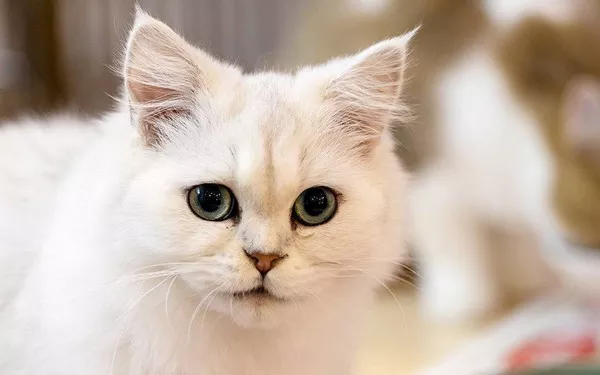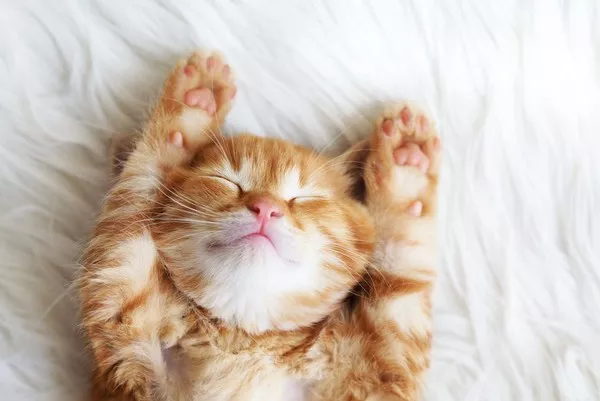Introduction to Calico Cats
Calico cats are beloved for their striking tricolor coat patterns, characterized by patches of white, orange, and black fur. These feline beauties are not a distinct breed but rather a color pattern found in various breeds, including the American Shorthair, Persian, and Maine Coon. The distinctive coat of a calico cat is not only visually stunning but also a product of intricate genetic factors.
The genetics behind calico coats are fascinating. Female calico cats typically have two X chromosomes, while males have one X and one Y chromosome. The gene responsible for coat color is located on the X chromosome, and in females, one X chromosome is randomly inactivated in each cell during early development. This phenomenon results in the patches of different colors seen in calico cats.
Shedding Basics
Like all felines, calico cats shed their fur as part of a natural process. Shedding is essential for cats to maintain a healthy coat, as it removes dead or damaged hair and allows for the growth of new fur. The cycle of hair growth and loss is influenced by various factors, including genetics, age, health, and environmental conditions.
Cats typically have three stages of hair growth: anagen (growth), catagen (transitional), and telogen (resting or shedding). Shedding occurs primarily during the telogen phase when old hair is pushed out by new growth. This shedding process is continuous but may vary in intensity depending on factors such as breed, health, and season.
Factors Influencing Shedding
Several factors can influence the shedding patterns of calico cats. Breed plays a significant role, as some breeds are predisposed to heavier shedding due to their coat type or genetics. Additionally, the health of a cat can affect shedding; underlying medical conditions or poor nutrition may result in excessive or abnormal shedding.
Diet also plays a crucial role in maintaining a healthy coat and minimizing shedding. A balanced diet rich in essential nutrients, such as omega-3 fatty acids and protein, supports coat health and reduces shedding. Furthermore, environmental factors, including temperature, humidity, and stress, can impact shedding frequency and volume.
Seasonal Shedding Patterns
Seasonal changes can significantly influence shedding in calico cats. Like many animals, cats often experience heavier shedding in the spring and fall as their bodies adapt to temperature fluctuations. In preparation for warmer weather, cats shed their thicker winter coats, replacing them with lighter fur suited for the summer months. Similarly, as temperatures cool in the fall, cats may shed their summer coats to grow thicker fur for insulation.
Grooming Tips
Proper grooming is essential for managing shedding in calico cats. Regular brushing helps remove loose fur and prevents matting, reducing the amount of hair shed around the home. Choose grooming tools suited to your cat’s coat type, such as slicker brushes for long-haired calicos and rubber grooming gloves for short-haired breeds.
When grooming your calico cat, pay attention to sensitive areas such as the belly, armpits, and behind the ears. These areas are prone to matting and may require extra attention. Additionally, incorporate grooming into your cat’s routine from a young age to acclimate them to the process and reduce stress.
Health Considerations
While shedding is a natural process, excessive or abnormal shedding may indicate an underlying health issue. Conditions such as allergies, hormonal imbalances, parasites, or skin infections can lead to increased shedding in calico cats. If you notice sudden or severe shedding, along with other symptoms such as hair loss, skin irritation, or changes in behavior, consult your veterinarian promptly.
Regular veterinary check-ups are essential for monitoring your cat’s health and addressing any potential issues before they escalate. Your vet can provide guidance on proper nutrition, parasite control, and other preventive measures to maintain your calico cat’s coat health.
Diet and Nutrition
Nutrition plays a vital role in maintaining a healthy coat and minimizing shedding in calico cats. Ensure your cat’s diet is complete and balanced, providing essential nutrients such as protein, vitamins, and minerals. Omega-3 fatty acids, found in fish oil or supplements, can also promote healthy skin and fur.
Consider your cat’s age, activity level, and any specific dietary requirements when selecting a pet food. High-quality commercial diets formulated for cats provide the necessary nutrients for coat health. If you choose to supplement your cat’s diet with homemade or raw food, consult your veterinarian to ensure it meets their nutritional needs.
Stress and Behavior
Stress can have a significant impact on a cat’s shedding patterns and overall health. Environmental changes, such as moving to a new home, the addition of a new pet, or changes in routine, can trigger stress in calico cats. Additionally, loud noises, household disruptions, or conflicts with other animals may contribute to anxiety and increased shedding.
Creating a calming environment is essential for reducing stress and minimizing shedding in calico cats. Provide plenty of enrichment, such as toys, scratching posts, and hiding spots, to keep your cat mentally stimulated. Establish a consistent routine for feeding, play, and grooming to promote feelings of security and reduce anxiety.
Comparison with Other Breeds
While shedding is a common characteristic among all cats, the frequency and volume of shedding can vary between breeds. Some breeds, such as the Siamese or Sphinx, are known for minimal shedding due to their short, fine coats. In contrast, breeds like the Maine Coon or Persian may shed more heavily due to their dense, long fur.
When comparing shedding in calico cats with other breeds, it’s essential to consider factors such as coat length, texture, and grooming needs. While calico cats may shed moderately, regular grooming and proper care can help minimize the impact on your home and clothing.
FAQs
Do all calico cats have the same coat pattern?
No, each calico cat has a unique combination of white, orange, and black patches, resulting from random X-chromosome inactivation during development.
Are calico cats a specific breed?
No, calico cats are not a distinct breed but rather a color pattern found in various breeds, including the American Shorthair, Persian, and Maine Coon.
How often should I groom my calico cat to manage shedding?
The frequency of grooming depends on your cat’s coat length and texture. Generally, aim to brush your calico cat at least once a week to remove loose fur and prevent matting.
Can diet affect shedding in calico cats?
Yes, nutrition plays a crucial role in coat health and shedding. A balanced diet rich in essential nutrients, such as omega-3 fatty acids and protein, can help minimize shedding and promote a healthy coat.
In conclusion, shedding is a natural and necessary process for calico cats to maintain a healthy coat. By understanding the factors influencing shedding and implementing proper grooming and care techniques, you can help minimize shedding and keep your calico cat looking and feeling their best. If you have concerns about your cat’s shedding or overall health, consult your veterinarian for personalized guidance and support.
Related Topics:
























